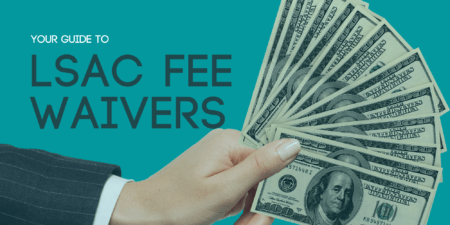We have talked about how incoming law students are in a better position than ever to get big merit scholarships. A recent article in Fortune has me realizing that I may have underestimated just how green the grass is out there. How green is it? It’s 18th-hole-at-Augusta-green. Fortune reported on a student bound for the law school Washington University in St. Louis who negotiated a full-tuition scholarship with a 166 LSAT score. While that’s a respectable score, it should be noted that it’s just at the school’s median for the previous year!

While drawing too many conclusions from any one outcome might be hasty, you wouldn’t likely have seen this the year I entered law school (2009). In any case, the trend towards dishing out more cash is well documented by now. Fortune says that last year law schools gave out $1 billion in aid to defray law school costs, a figure that had grown every year since 2007 when just over $721 million was dispensed.
For those just now familiarizing themselves with the changes in the legal market and legal education, I want to warn you straight away that the increase in student aid is designed to make law school a more attractive option given that overall, law school has become a worse bet. The market for legal hires has been weak. The now oft-quoted ABA figure from 2012 is that nine months after the class graduated, only 56.2% of law school graduates had full-time legal jobs requiring bar passage. These numbers have improved in recent years, but we’re only beginning to see a modest increase in applicant numbers.
Assuming that most law students want legal jobs and want them right away, that’s a bleak statistic. Right now, certainly, law school at full price is not likely an attractive value proposition unless perhaps you attend one of the very top schools (we recently discussed the circumstances under which attending law school might be a safer bet here).
As potential law students become aware of the ailing market for lawyers, applications to law school have taken a nose dive, falling 38% from just 2010. In this situation law schools have a few options:
- They can admit the same number of students with the same financial aid budget. This will result in a weaker pool of students (as determined by GPA and LSAT).
- They can cut class size to keep the same or similar level of student quality.
- They can close the school (hasn’t happened anywhere yet).
- Schools can significantly reduce tuition to lure students (again, not happening).
- They can lure more quality students with better scholarship offers.
Though we’ve seen a lot of option 2, nearly every law school is opting for option 4 to weather out the storm. The changes may indeed end up permanent: already, we are approaching a system closer to that in place for undergraduate, where very, very few students pay anywhere near the full price to go to school. If things keep up, we could see just as robust fin-aid regime for law schools, which, while it is not my favored solution to the law school cost problem, it is indeed better than having too many students pay out the nose for a degree that that’s not worth the price on the tag.
Here’s the call to action for current prospective students: Don’t be part of the ever-shrinking group that is paying too much for law school. Any student who is considering law school now should be aware of the enhanced bargaining position they now have to obtain scholarships. Does this mean you can march into a law school with your father’s lawyer demanding money? No. You still have to follow etiquette (well-known law school admissions consultant Ann Levine has good advice on negotiation etiquette in her very cheap book, The Law School Admissions Game). However, be firm about what you need to go to a school. I loved one quote from Fortune piece: “Like any negotiation… the only real play is that you are willing to walk away.” Commit that to memory. My firm advice is that if you don’t get a price that makes a law school attractive to you once you’ve genuinely assessed all the risks associated with attending, then you shouldn’t hesitate to walk away.
The other caveat: you have to be desirable to law schools. Put yourself in the position from where they want to attract you. What this means mostly is that you want to get your LSAT and GPA up to or above the school’s median. Say you want to get into USC on a significant scholarship and your GPA is a little below their median. You need to match at least the LSAT median that they are trying to maintain.
I would guess that almost all of the increase in scholarship money in recent years (the $721 million to a $1 billion jump) has gone to propping up the school’s selectivity as measured by the LSAT and GPA scores of incoming students. That means the money had gone to students who have good numbers compared with the school’s average so that schools can keep their position in the rankings and maintain that they are graduating students of the same caliber as they did before law school enrollment plummeted.
It’s frequently forgotten that the all-important USNWR rankings only measure school selectivity based on the median GPA and LSAT scores for incoming students (not the 75th and 25th percentile figures). Therefore, while there is undoubtedly an advantage in scholarship pulling power to have a GPA or LSAT at the school’s 75th, it may not necessarily be a massive, massive boost over just being at or above the median.
It should be absolutely crystal clear to anyone reading this how important a couple of points either way on the LSAT can be. Pick a target and prep hard to make sure you get it. As always, we are here to help with that- besides providing free advice in the comments, we have a ton of posts on getting your best LSAT score. Start here: How I Got A 177 On The LSAT.




3 Comments
Does being a division 1 football player help with the admissions process? I have heard yes at a lot of schools, looks amazing for time management and leadership. Wondering what your thoughts were?
It’s going to be a good soft. Law schools do like athletes. However, it won’t totally make or break you. As usual, expect the numbers to determine 90% of where you do or don’t get in.
I have an undergrad GPA of 4.00 from Berkeley, a Fulbright, and anticipate an LSAT score of 175 or better based on my diagnostic score and aptitude for study. But my motive for taking the LSAT is to become a Blueprint instructor, not to attend law school…..because I am 46 and assume that no law school will offer me a full ride scholarship despite my other appealing qualifications. Am I correct in that assumption? (I graduated from Cal and got my Fulbright waaaay back in 1999 – I stumbled into the world of LSAT prep after recently picking up a book of logic games to do just for fun).
Thanks for your input!